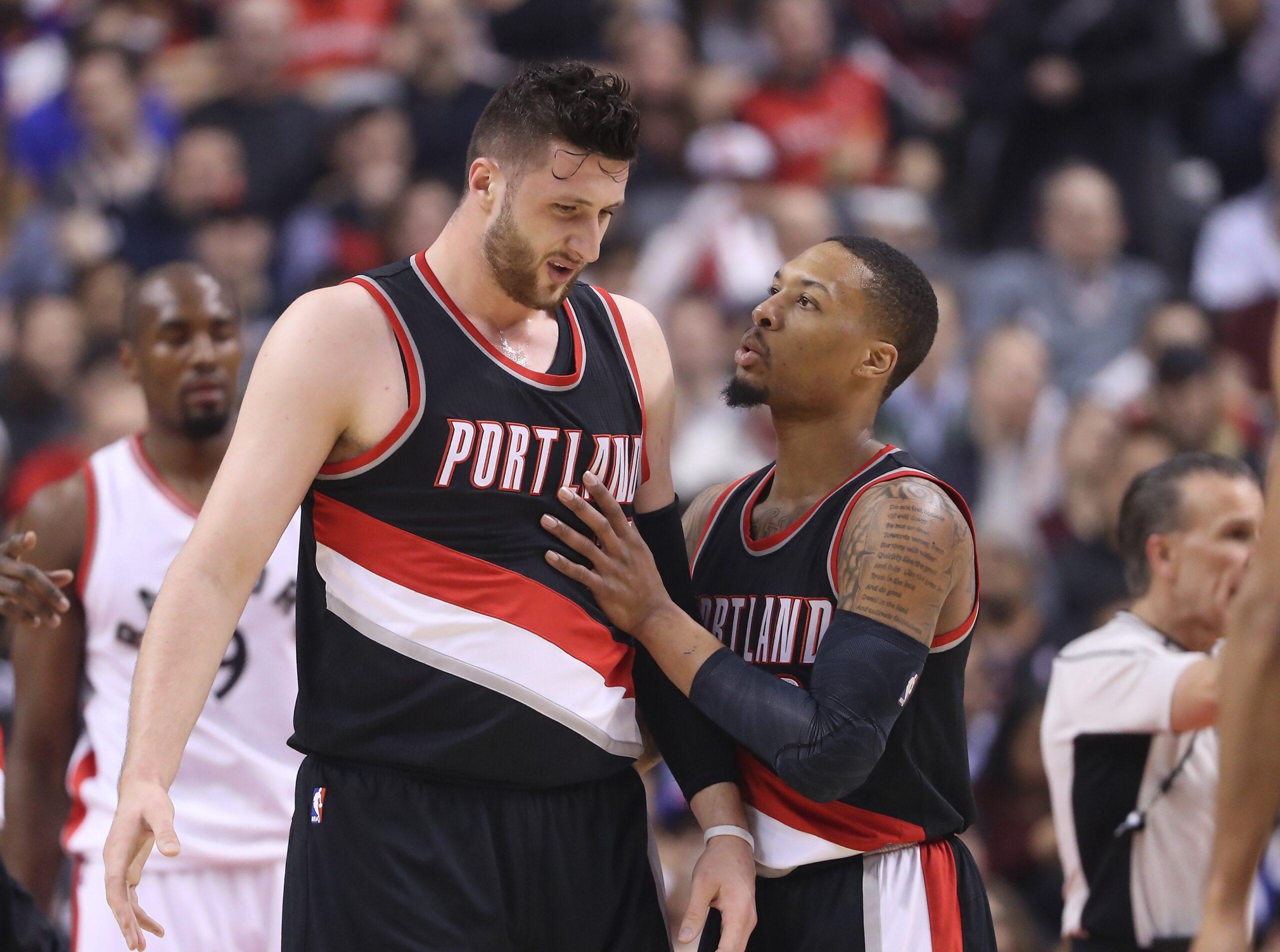
There is a noticeable lag — in habits and practices; in execution — between NBA offense and defense this season. The disconnect is never more obvious than during a pregame broadcast when the first bullet point on a “Keys of the Game” graphic reads, “DEFEND THE 3-POINT LINE.” The entire league has identified the importance of what goes on right around that line; what’s murkier is how to respond.
Over the past month, no player has highlighted (and exploited) that chasm between offense and defense quite like Damian Lillard. His 3s come from a step or two deeper than defenders expect them, like a modern adaptation of Nick Van Exel’s glorious 18-foot free throw routine. Dame is among a rare breed of players comfortable shooting from 28 feet out off the dribble, on a hand-off, or spotting up. That kind of ability can warp a defender’s sense of rhythm and anticipation — and it takes more than a season of watching the Warriors shoot from 30 feet out to recalibrate one’s sense of acceptable shooting range. “There’s less than five players in this league that you have to do something different on your pick-and-roll coverage,” Miami Heat coach Erik Spoelstra said after his team was single-handedly decimated by Lillard’s 9-for-12 performance from behind the arc (en route to 49 points on only 21 shots) on Sunday. “Lillard obviously is one of those guys.”
The Blazers are 8–2 in their last 10 games, and Damian Lillard has been at the center of it all, earning Western Conference Player of the Week honors after averaging 36 points on 53.8 percent shooting (54.8 percent from 3!) over his last five games. With Steph Curry’s jumper looking like André Roberson’s for a significant portion of the past month, Lillard has taken the lead in the NBA’s deep-space-exploration program — at least until Lonzo gets here.
When an entire league motions toward a widespread floor plan, the concept of spacing in the NBA splinters. Yes, playing four or five men out on the perimeter intrinsically allows for more room to create shot opportunities all over the court, but that alone doesn’t solve a defense, nor does it ensure offensive competence. While much of the Blazers’ early-season woes could be attributed to piss-poor defense, their offense, once considered Diet Warriors, had fallen out of sync and out of the top 10 in offensive rating. In theory, the Blazers had the personnel to go five-out, with young, athletic, floor-spacing big men (Meyers Leonard, Noah Vonleh). But the fit, in practice, was incongruous. And with Lillard playing through injuries, he needed help creating windows for himself and often came away empty-handed. Space means little without displacement.
Which makes a play like this seem like a godsend:
That’s season savior Jusuf Nurkic bulldozing Lillard’s defender, giving Dame free range against a defense wondering how Josh Richardson managed to run into an Easter Island statue at center court. It was an old-school, bone-crushing screen meant to not only dislodge a defender from the point guard, but to knock the dude on his ass.
Nurkic (shipped along with a 2017 first-round pick) was the crown jewel in a pre-deadline trade with fellow 8-seed contender Denver for theoretical triple-double machine Mason Plumlee. While it made sense for both teams, as far as optics go, the trade is looking more and more lopsided by the day. Despite playing fewer than 20 games with the Blazers so far this season, Nurkic has already become indispensable to the team’s offense. His on-off net rating differential is by far the highest on the team.
The small sample size is implicit, but immaterial: He has been incredible from every vantage, whether you care about the metrics or you care about only the Blazers’ record since the All-Star break (9–4). Nurkic is posting dreamy fantasy lines every night, but arguably more important to Portland are his contributions to overall team flow simply by being an extremely large, nimble man. Nurkic has quickly become the ideal pick-and-roll partner for both Lillard and C.J. McCollum. He not only seems to embrace the violence that comes with setting a solid screen, but he’s proved himself a versatile receiving threat, operating as a hellacious rim runner and someone who can be a secondary playmaker on a short roll to the elbows. Due to his girth and mobility, he’s been perfect on drag screens in transition and early set plays.
Since the All-Star break, Nurkic is in the top five in the screen assists, which the league defines as a screen that directly leads to a made field goal by that teammate. Timing is imperative for a point guard with deep range. The extra beat or split second it takes for a defender to identify whether he should go under or whether he has to fight a mountain to get the ball handler is the difference between an open 3 and an off-balance, contested one.
This is how the past and present cohabitate in the NBA. The unicorns and multihyphenate big men of the league have skewed the standards for centers over the past couple of years, but there are key holdouts whose skills reflect a former era, whose productivity proves that there is a place for huge, interior-oriented players. You just have to run harder and faster than your size might suggest.
Perimeter offenses thrive on striking fast and taking advantage of mismatches, but sometimes, the biggest mismatch a team will find on a given play is when a center slams a defender out of commission. In Nurkic, Lillard has found his Andrew Bogut, his Marcin Gortat, his Rudy Gobert — his elite screener that sets everything else into motion. The Blazers are in a strangely positive state of mind right now: only half a game back from the 8-seed and fully entrenched in a puppy-love phase with Nurkic. The uptick in Lillard’s productivity with Nurkic’s arrival is no fluky coincidence. Not only could this be the start of a beautiful friendship — it could secure them the final playoff spot.

